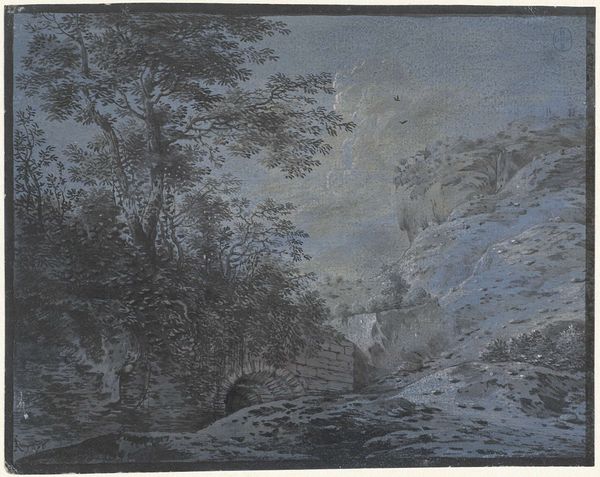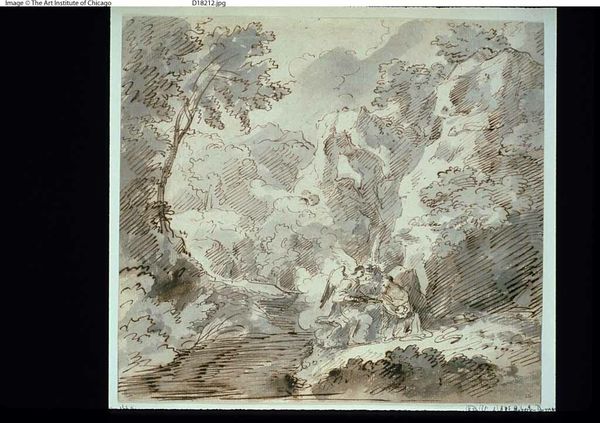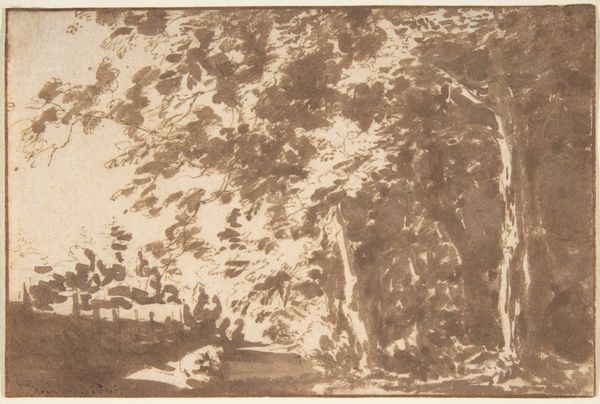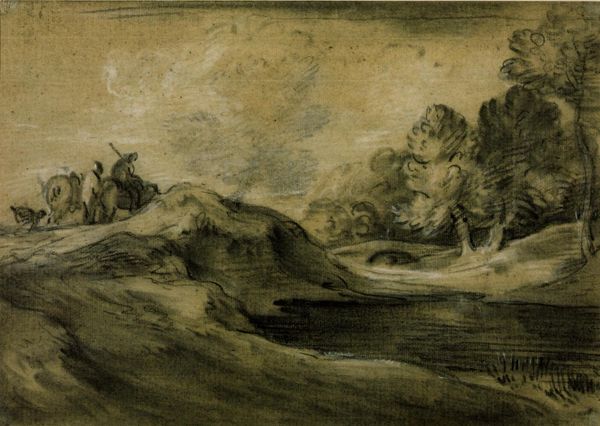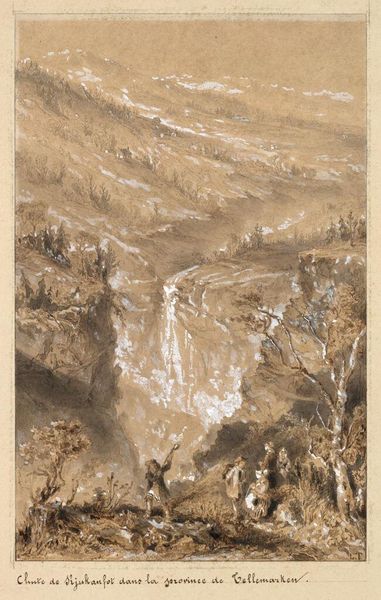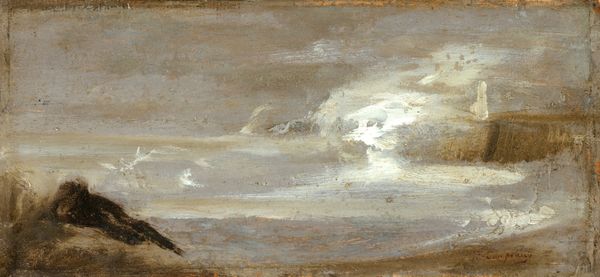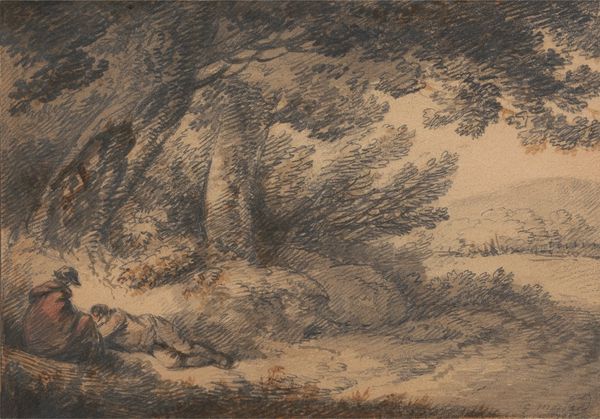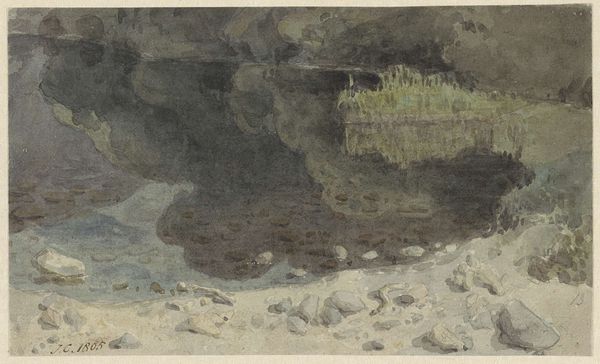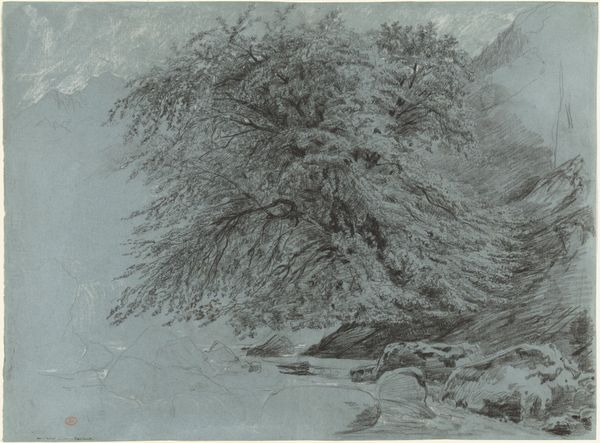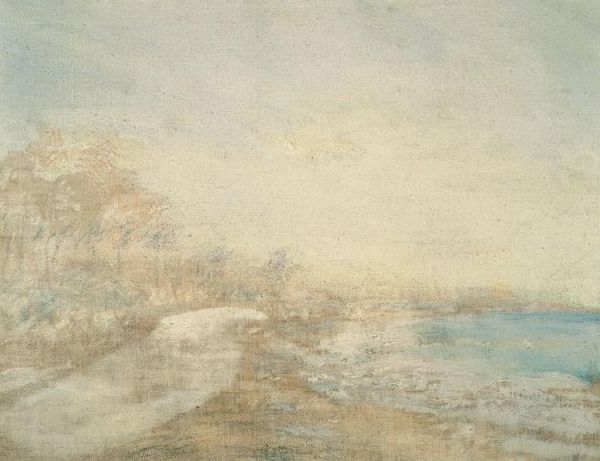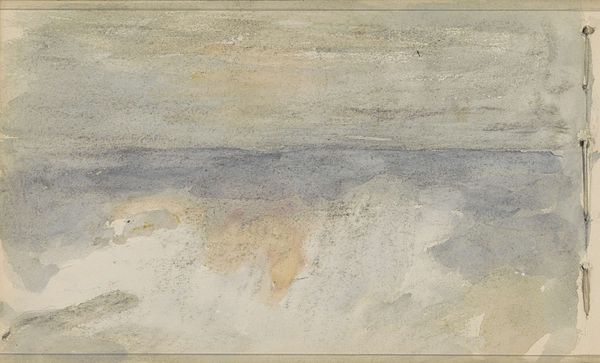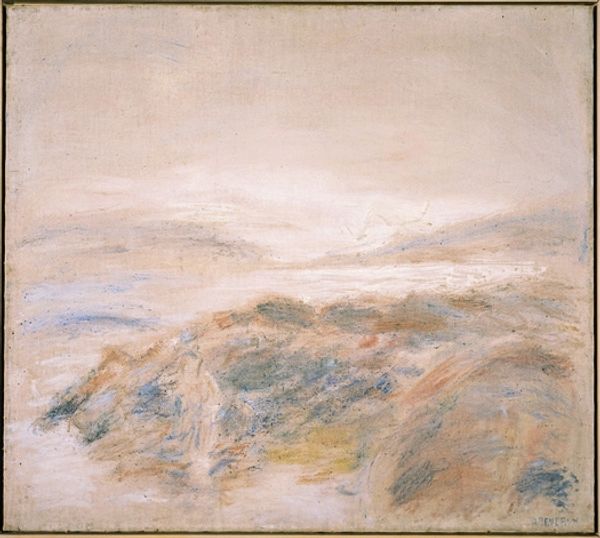
Dimensions: 60 x 76 cm
Copyright: Public domain
Editor: We’re looking at Gustave Courbet's "Snow Landscape in Jura" from 1866. It's an oil painting and it feels so heavy, doesn’t it? The impasto is so thick it’s almost sculptural. There’s a deer in the bottom left; it really enhances the sheer scale of this scene. What do you see in this piece? Curator: Indeed. The sheer materiality commands attention. Consider how Courbet employs impasto, layering the pigment not to imitate reality but to present it anew, as object. The snow isn’t merely depicted; it's *there*, demanding tactile engagement, were we able to touch it. Observe, too, how he divides the canvas. The dark pool of water sits in stark opposition to the snow, emphasizing the painting’s binary structure. Does this interplay of light and dark resonate with you? Editor: Absolutely. It’s like he’s playing with textures to create drama, almost pushing the painting off the canvas. But what about the animal? Does its placement conform to any structure? Curator: The deer, rendered with far less impasto, provides a critical point of scalar reference. Note how its diminutive presence, relative to the landscape, underscores humanity’s, or rather nature’s, power. Its integration into the structural dynamic encourages questions on how Courbet mediates between scale, depth, and pictorial unity. Editor: I see, so even that little detail impacts how the entire structure of the painting communicates. This helps clarify his process for me. Thank you! Curator: A fascinating and, at times, rigorous approach, isn’t it?
Comments
No comments
Be the first to comment and join the conversation on the ultimate creative platform.
